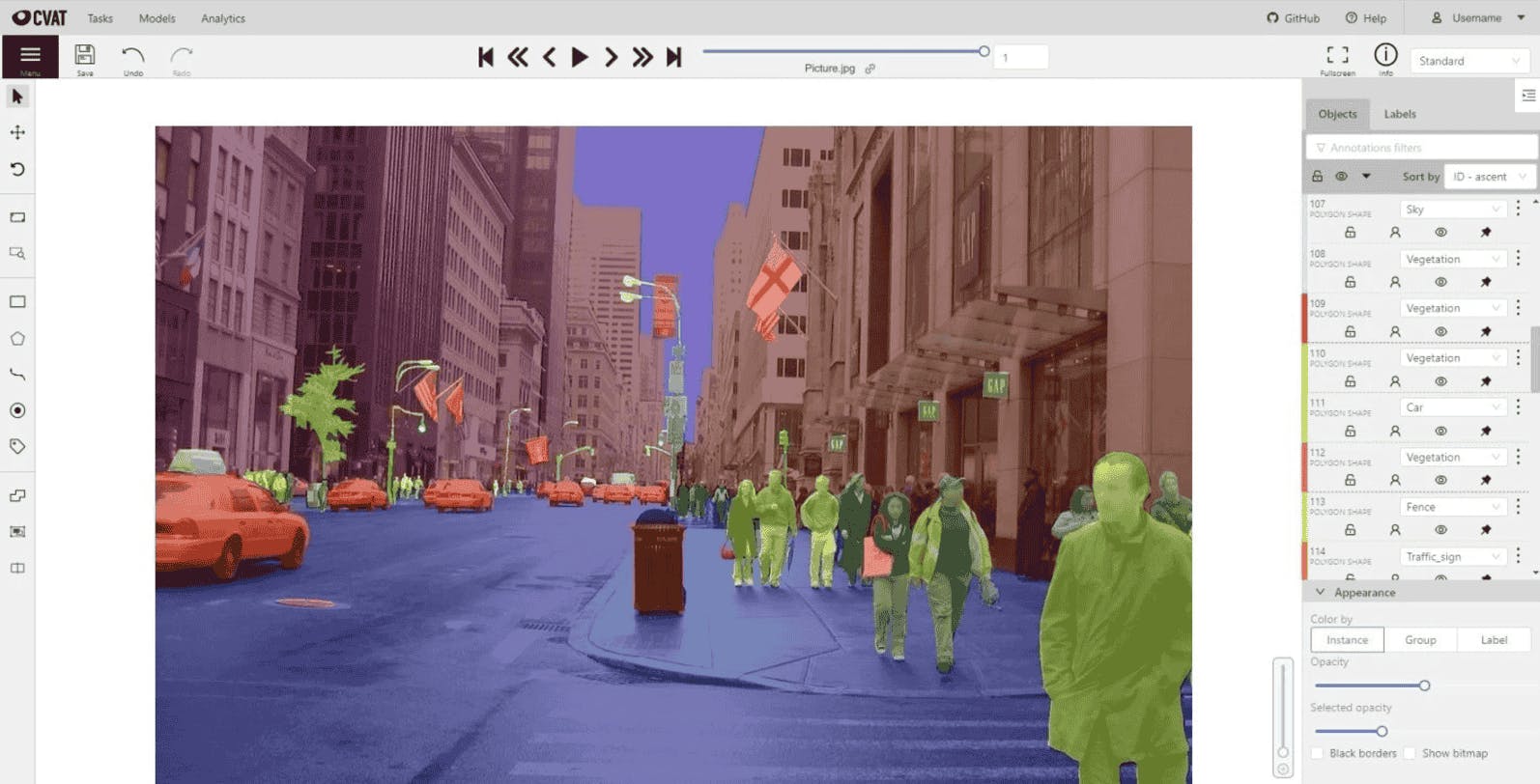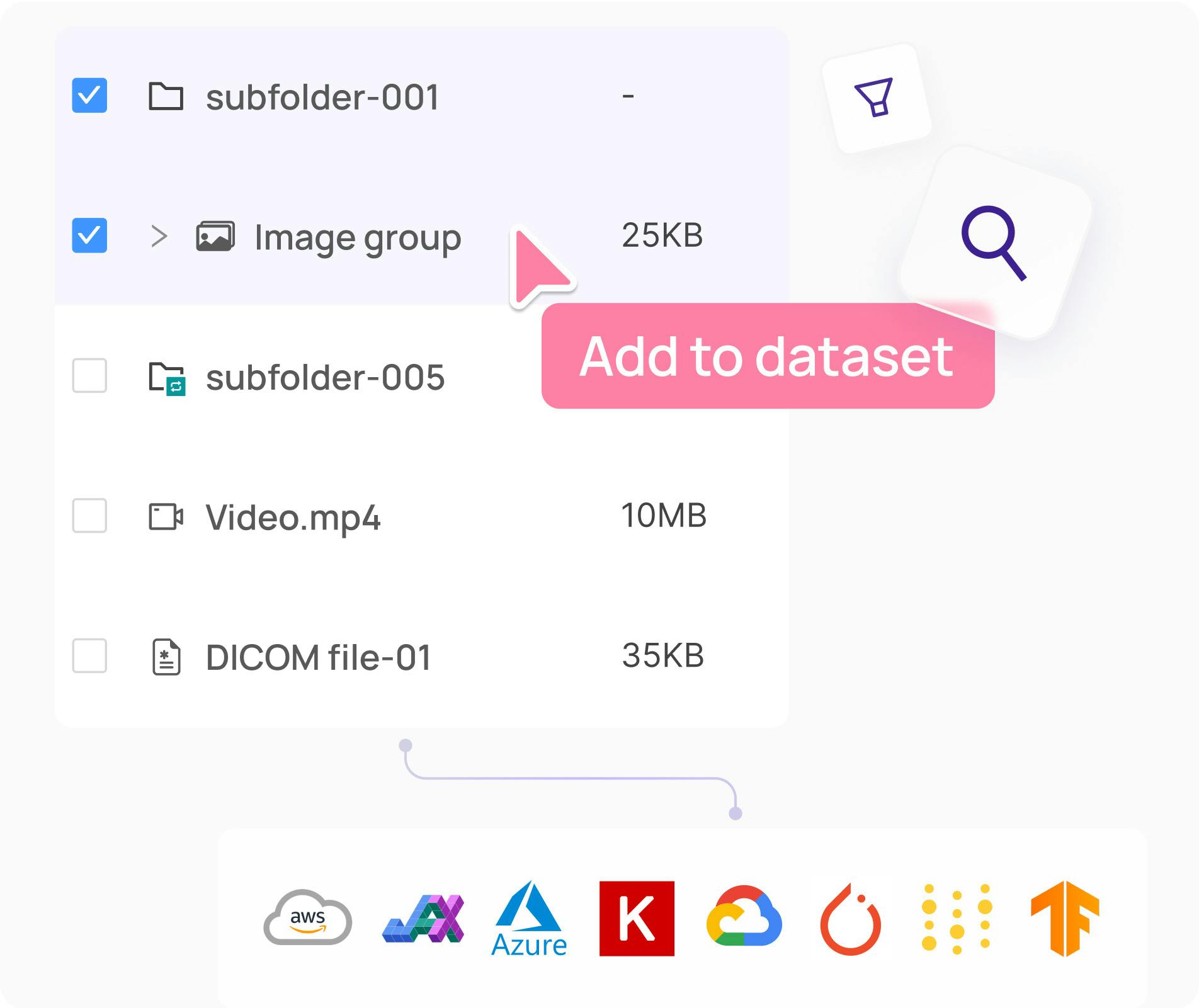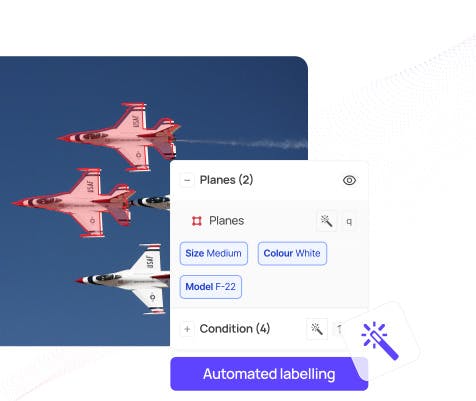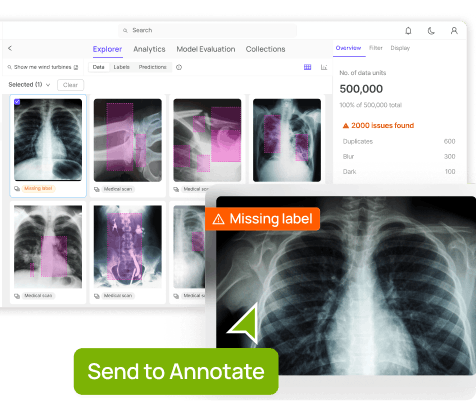Contents
What Is a Data Labeling Platform?
Overview of Data Labeling Platforms: Physical AI & Robotics
8 Best Data Labeling Platforms for Physical AI
Choosing the Right Platform for Robotics Data
Final Thoughts: Why Encord Leads for Physical AI
Encord Blog
8 Best Data Labeling Platforms for Physical AI & Robotics [2025]
5 min read

Encord is the top data labeling platform for robotics and Physical AI, built for multimodal datasets like LiDAR, radar, 3D, and synchronized video. With automation, compliance, and end-to-end data ops, it powers the next generation of robotics, drones, and autonomous systems that demand accuracy, scalability, and safety.
Robotics and Physical AI systems depend on vast, multimodal, and precisely labeled datasets. Unlike generative AI models, which thrive on text, Physical AI requires perception across visual, spatial, and temporal modalities, from LiDAR scans and 3D point clouds to synchronized camera feeds, radar, and audio sensors.
That’s why data labeling platforms are key for model performance. Especially in physical AI use cases, such as drones, robotics and autonomous vehicles, accuracy is essential for safety. These aren’t just annotation tools, they are infrastructure for robotics data ops, helping teams build, manage, and iterate on complex datasets while ensuring compliance and scalability.
Here are the 8 best data labeling platforms for Physical AI and robotics in 2025.
What Is a Data Labeling Platform?
A data labeling platform is software that enables teams to annotate and manage training data used to teach AI models how to perceive and act in the physical world. In robotics and Physical AI, these platforms support complex, multimodal inputs—such as LiDAR, 3D point clouds, radar, video, and sensor data—ensuring AI systems can detect objects, navigate safely, and interact intelligently. Modern platforms like Encord combine automation, workflow orchestration, and compliance features to deliver scalable, production-ready data infrastructure for robotics and autonomous machines.
Overview of Data Labeling Platforms: Physical AI & Robotics
| Platform | Modalities Supported | Robotics Features | Automation | Collaboration & QA | Compliance | Deployment |
| Encord | Images, video, audio, text, docs, DICOM, LiDAR, 3D | Sensor fusion, temporal tracking, multimodal pipelines | SAM, GPT, CLIP-assisted, interpolation | Dashboards, workflows, QA consensus | SOC 2, HIPAA, GDPR | Cloud + Private |
| Segments.ai | 2D + 3D, LiDAR, video | Synchronized image + LiDAR annotation, cuboids, segmentation | Interpolation, semi-automated tracking | Dataset versioning, role-based | GDPR-ready | Cloud |
| Scale AI | LiDAR, radar, video, images, metadata | AV-grade perception, dense 3D, multi-sensor annotation | AI-assisted with HITL | Large-scale workforce QA | Enterprise security | Cloud |
| SuperbAI | Images, video, point-cloud | Dataset mgmt + annotation + ML lifecycle | Active learning, automation | Access control, drift detection | SOC, AES-256 | Cloud |
| BasicAI | LiDAR, 3D point clouds, images, video | Dense 3D segmentation, sensor fusion | AI-assisted 3D labeling | Role-based workflows | GDPR-ready | Cloud |
| Kili Technology | Images, text, audio, video | Lightweight robotics annotation, active learning | SAM + ChatGPT pre-labels | Collaboration roles | SOC 2, GDPR | Cloud |
| CVAT | Images, video, LiDAR (custom) | Open-source, customizable robotics datasets | Plug-in ML models for pre-labeling | Task assignment, analytics | Community-defined | On-prem / Cloud |
| TrainingData | Images, video | Secure on-prem robotics labeling | Limited (basic automation) | Role-based workflows | Customizable | On-prem (Docker) |
8 Best Data Labeling Platforms for Physical AI
1. Encord – Full-Stack Multimodal Labeling for Robotics

Encord is built for the scale and complexity of robotics. It handles 2D, 3D, LiDAR, video, and medical imaging seamlessly while offering advanced automation, compliance, and workflow orchestration.
Key features:
- Advanced multimodal support for 2D, 3D, LiDAR, radar, audio, text, DICOM/NIfTI
- Robotics workflows with multi-sensor fusion, temporal sequence labeling, object tracking
- SAM, GPT, CLIP-assisted labeling plus interpolation across frames
- Supports 5M+ labels and 200K+ video frames per project
- Enterprise-grade compliance with SOC 2, HIPAA, GDPR
- QA dashboards for workforce monitoring, consensus, and analytics
Best for: Robotics companies and enterprise teams needing end-to-end data ops for multimodal Physical AI.
2. Segments.ai – Multi-Sensor Annotation for Robotics & AV
Segments.ai specializes in synchronized 2D + 3D annotation, making it a great fit for robotics perception systems where point clouds, video, and sensor fusion come together.
Key features:
- 2D–3D synchronization which allows for overlaying point clouds on images for richer annotation context
- 3D annotation tools such as cuboids, segmentation, and interpolation across LiDAR frames
- Scalable handling that allows for efficient annotation for massive point clouds
Best for: Autonomous vehicles, drones, and robotics teams working with LiDAR + camera fusion.
3. Scale AI – Perception Data at Scale
Scale AI is a proven leader in perception data, widely used in autonomous driving and robotics. Its infrastructure supports large multimodal datasets with advanced automation.
Key features:
- Sensor support across LiDAR, radar, video, images, and metadata
- Dense 3D labeling including cuboids, segmentation, sensor fusion annotation
- MLOps connections for dataset-to-training cycles
Best for: Teams focused on autonomous navigation and sensor fusion.
4. SuperbAI – Flexible Data Annotation with Quality Monitoring
SuperbAI offers a versatile annotation and dataset management platform that helps robotics teams improve data quality and monitor model performance. It is best suited as a labeling and dataset QA solution.
Key features:
- Multimodal support including annotation of images, video, and point clouds.
- AI-assisted labeling across bounding boxes, polygons, segmentation, interpolation
- Dataset QA tools to detect data drift and spot quality gaps
Best for: Robotics teams seeking annotation with built-in dataset monitoring, especially those looking to supplement an existing ML pipeline.
5. BasicAI – Robust 3D & LiDAR Annotation for Robotics
BasicAI is built for LiDAR, 3D point clouds, and sensor fusion, with advanced automation for robotics perception.
Key features:
- 3D-first tooling, including point cloud segmentation, cuboids, object tracking
- Sensor fusion that allows for annotation of synchronized image + point cloud data
Best for: Robotics teams that rely heavily on LiDAR and multi-sensor annotation.
6. Kili Technology – Lightweight Robotics Annotation Platform

Kili is a flexible, user-friendly platform that supports multiple modalities with active learning integrations.
Key features:
- Multimodal support across images, text, audio, and video
- Integrates with SAM and LLMs for assisted labeling.
- Active learning to prioritize uncertain samples for annotation.
Best for: Robotics startups and labs that need lightweight annotation with automation hooks.
7. CVAT – Open-Source Annotation for Robotics

CVAT is one of the most popular open-source annotation tools, widely used in robotics research for its flexibility and extensibility.
Key features:
- Task variety across bounding boxes, polygons, cuboids, keypoints, and trajectories
- Open-source customization that integrates with custom robotics sensor data and ML models
- Plug in your own ML models for pre-labeling
- Analytics to track annotation progress and workforce performance
- Strong ecosystem and integrations
Best for: Robotics teams wanting full control and customizability without vendor lock-in.
8. TrainingData – On-Premise Robotics Annotation
TrainingData is a secure, on-premise platform designed for sensitive robotics projects in defense and industrial contexts.
Key features:
- On-prem deployment via Docker for data sovereignty
- Annotation tools such as segmentation, bounding boxes, polygons, keypoints
- Tailored workflows for robotics datasets
- Security-first as there is no external data transfer
Best for: Defense, aerospace, or industrial robotics teams requiring high-security annotation.
Choosing the Right Platform for Robotics Data
| Robotics Need / Use Case | Best Choice(s) |
| Enterprise-scale multimodal robotics | Encord |
| LiDAR + 3D sensor fusion | Segments.ai, BasicAI |
| Autonomous navigation & AV perception | Scale AI, Encord |
| End-to-end ML lifecycle integration | SuperbAI, Encord |
| Lightweight robotics startups | Kili Technology |
| Customizable & open-source workflows | CVAT |
| On-prem, high-security robotics | TrainingData |
Final Thoughts: Why Encord Leads for Physical AI
Robotics demands more than just annotation, it needs scalable, multimodal, and compliant data infrastructure. While platforms like Segments.ai and BasicAI excel in LiDAR and CVAT offers open-source flexibility, Encord is the most complete platform for robotics teams in 2025.
For robotics teams serious about scaling from research pilots to production systems. Try Encord.
Explore the platform
Data infrastructure for multimodal AI
Explore product
Explore our products
- Robotics and Physical AI systems require precise, multimodal datasets—spanning LiDAR, radar, 3D point clouds, synchronized video, and audio sensors. Accurate labeling ensures safe navigation, reliable perception, and robust model performance. In safety-critical domains like drones, autonomous vehicles, and healthcare robotics, high-quality annotations are non-negotiable.
- Encord is built for multimodal, large-scale robotics data operations. It supports 2D, 3D, LiDAR, radar, video, medical imaging, and audio while offering advanced workflow orchestration, quality assurance, and compliance. Unlike single-purpose annotation tools, Encord provides a full-stack platform: annotation, data management, QA, and evaluation in one place.
- Yes. Encord has robust tooling for 3D point clouds, LiDAR scans, and sensor fusion workflows. It enables teams to annotate synchronized datasets across modalities (e.g., camera + LiDAR) with object tracking, interpolation, and temporal sequence labeling.
- Absolutely. Encord supports over 5 million labels and 200,000+ video frames per project, making it ideal for robotics companies scaling from pilot projects to production systems. Its cloud integrations (AWS, Azure, Google Cloud, and Open Telekom OSS) ensure smooth dataset imports and secure data ops at scale.
- While Segments.ai specializes in LiDAR-camera fusion, Scale AI in perception data pipelines, and CVAT in open-source customization, Encord stands out as the most complete platform. It combines multimodal annotation, compliance, QA dashboards, and workforce management into one system—helping robotics teams accelerate deployment with fewer tools.


